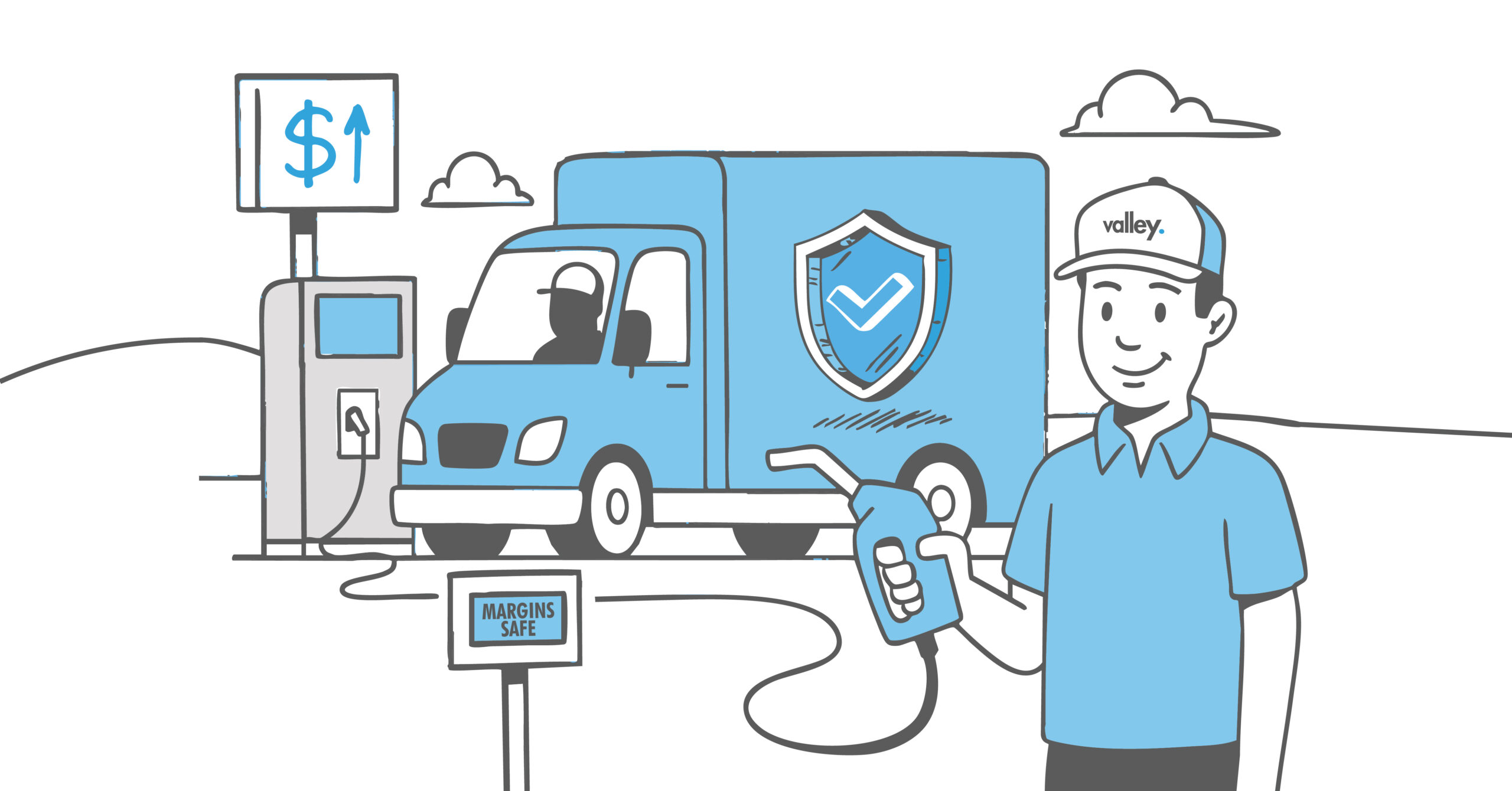How to Keep Your Margins Safe in a Market Where Fuel Prices Change

After payroll, fuel is one of the most expensive things in trucking and one of the hardest to plan for. Prices go up and down because of changes in the weather, the economy, and world politics. A small change at the gas station can have a big impact on a whole fleet, sometimes turning profits into losses.
The average cost of running a truck in 2024 was $2.26 per mile, with fuel accounting for almost a quarter of that. Prices went down a little from 2023, but the cost of labor and equipment hit record highs. The truth is that every carrier knows that every gallon matters.
A Real-Life Example: Saving $280,000 in One Year
In just six months, one Texas fleet’s fuel costs went up by 14%. The company didn’t want to accept the loss, so it changed how it worked:
- Driver training: Drivers learned how to speed up and slow down smoothly and how to cut down on idle time.
- Route optimization: Dispatch planned trips better, which cut down on miles that weren’t used.
- Aerodynamic upgrades: Trailer skirts were added to cut down on drag and make the trailer work better.
- Tracking data: Weekly reviews of fuel and idle time found problems and made drivers responsible.
The outcome was clear. In one year, the fleet saved over $280,000. Fuel use went down by 8%, service stayed the same, and the savings came from a lot of small changes that added up across the fleet.
Why Small Details Matter
Most trucking companies know that fuel costs a lot, but a lot of them don’t realize how much small things add up. For instance:
- An extra hour of idling every day uses hundreds of gallons of gas each year.
- Going the wrong way can add thousands of miles that you don’t need to.
- Driving aggressively can cut fuel efficiency by more than 10%.
- Bad maintenance, like having low tire pressure or clogged filters, makes your car use more gas and costs more to fix.
These may not seem like much on their own. They can cost or save hundreds of thousands of dollars a year for a fleet of 50 or 100 trucks.
Proven Ways Fleets Save on Fuel
The U.S. Department of Energy has reported that aerodynamic improvements alone can cut fuel use by 5 to 15 percent. When combined with better routes, telematics, and driver training, the savings multiply across the fleet.
Fleets use these proven steps to keep fuel costs under control:
- Put in parts that help with aerodynamics: Trailer skirts, tails, and cab deflectors cut down on drag and make things work better.
- Use tools to optimize your route: Real-time planning helps drivers avoid traffic, take shorter routes, and save time.
- Teach drivers how to save gas: Cutting down on idle time, speeding up smoothly, and braking steadily all help improve mileage without delaying deliveries.
- Keep track of and review data: Weekly reports on fuel and idle time make it easy to spot problems.
- Keep up with maintenance: Checking the engine regularly, cleaning the filters, and making sure the tires are at the right pressure all save gas and keep the car from breaking down.
Businesses that take these steps don’t have to wait for prices to drop. They take charge and cut down on waste while keeping their profits safe.
Protecting Margins from Every Angle
Fuel isn’t the only thing that costs money and eats into profits. A single event, like a breakdown, an accident, a delay, or a claim, can also wipe out savings. The best fleets find a balance between safety and efficiency:
- Insurance coverage: Policies that are set up correctly protect against losses from accidents, damage to cargo, and liability.
- Risk management: Regular safety training and checks for compliance lower the number of accidents.
- Planning for the unexpected: Having backup routes and vendors keeps things running smoothly when things go wrong.
Fleets become more resilient over time by combining smart operations with financial protection.
FAQs on Fuel Costs and Profit Margins
How much gas does idling use?
- A truck that is not moving can use up to a gallon of gas per hour. That can cost thousands of dollars in wasted costs for each truck over the course of a year.
Is it worth it to spend money on aerodynamic upgrades?
- Yes. Trailer skirts and tails usually pay for themselves in one to two years by saving gas.
Does how a driver acts really matter?
- Of course. Research shows that driving smoothly, keeping a steady speed, and not idling as much can boost fuel efficiency by 10% or more.
How does technology help lower the cost of fuel?
- Telematics and route optimization software help find problems and make changes on the fly, which cuts down on wasted miles and gas.
Can insurance help keep profit margins safe?
- Yes. Efficiency cuts down on costs, but insurance protects you from the unexpected. They all work together to keep margins steady.
Final Thoughts
Your plan doesn’t have to change, even though gas prices will. Fleets can protect their profits from both small losses and big ones by hiring trained drivers, planning routes carefully, doing smart maintenance, and getting the right insurance.
Companies that act now don’t just get through changes in fuel prices, they come out stronger.
